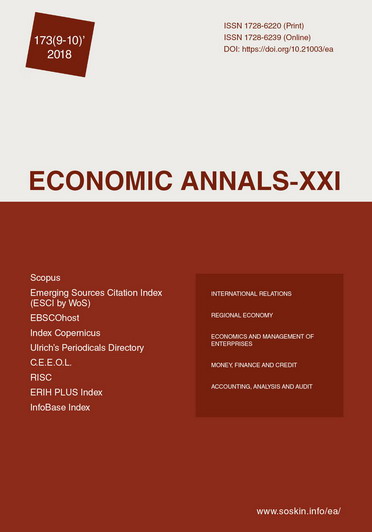Shaping the perception and vision of economic operators from the Romania-Ukraine-Moldova border area on interim financial reporting
Shaping the perception and vision of economic operators from the Romania-Ukraine-Moldova border area on interim financial reporting
Author(s): Claudia Elena Grigoraș-Ichim, Cristina Gabriela Cosmulese, Dmytro Savchuk, Artur ZhavoronokSubject(s): Financial Markets
Published by: Institute of Society Transformation
Keywords: Interim Financial Statements; IAS/IFRS; Economic Operators; Romania-Ukraine-Moldova Border Region;
Summary/Abstract: The issue of interim financial statements for quoted or unquoted companies has become even more relevant in the current context of globalisation of business. The purpose of this research work is to focus on the analysis of the abovementioned type of reporting, taking into account the need for information about the stakeholders and the costs involved and analyse both the international accounting standards IAS/IFRS and the possibility of application them with regard to the situation in the Romania-Ukraine-Moldova border region. In order to achieve the goal, we carried out an empirical research by applying a questionnaire to a target group of 290 traders in the border region: 201 from the north-eastern (NE) region of Romania, 46 from Moldova and 43 from Chernivtsi region (Ukraine). The applied questionnaire covers the similarities and differences in interim reporting from the three countries. The analysis of the correlation coefficients to determine the variables that quantify the impact on the obtained costs and benefits of the implementation of interim financial reporting values can be seen as tending towards zero, which indicates a lack of correlation between the variables. This indicates that the interviewed respondents do not associate any symmetric change in the company’s costs to the benefits following the implementation of the interim financial reports. That aspect encourages the promotion of this type of reporting among economic operators. As a result of the research, the respondents did not associate a symmetrical change in companies’ costs with the benefits identified as a result of the implementation of the interim financial reports; the economic operators that perform a breakdown of financial reports relating to organisations’ internal events have more chances to get significant benefits in order to achieve those companies’ financial forecasts. The matrix component recaptured by the Varimax rotation method shows three categories in which the obtained results are grouped for the questions aimed at the structure configuration of interim financial reports in accordance with IAS 34. The first one is the respondents whose vision of the content of interim financial reports is oriented towards detailing the organisation’s internal events that have a financial impact: the effect of changes in the composition of the entity during the interim period including business combinations, obtaining or losing control of subsidiaries and long-term investments, restructuring and discontinued operations; issuances, repurchases and repayments of debt and equity; the seasonality or cyclicality of interim operations; changes in contingent liabilities or contingent assets; loan default or breach of a loan agreement that has not been remedied on / or before the end of the reporting period; the nature and amount of items affecting assets, liabilities, equity, net income or cash flows that are unusual because of their nature, size or incidence. The second one is the respondents whose vision of the content of interim financial reports is oriented towards providing the materials reflecting the market value of the organisation and explanatory notes on positioning the organisation in the external environment, namely: acquisitions and disposals of items of tangible assets; reduction of the amount of inventories to the net realizable value and the resumption of this reduction; recognition of impairment losses on tangible assets, intangible assets, or other assets, and the reversal of such losses; effects of economic turmoil and market conditions, liquidity or difficulties of any continuity issues; an explanation of events and transactions significant to understanding the changes in financial position and performance of the entity at the end of the last reporting period; commitments for the purchase of tangible assets after completion of the interim period. The third one is the respondents whose vision is geared towards simplifying the presentation of the organisation’s financial situation: profit or loss and other comprehensive income; changes in equity; financial position; cash flows. An important support could be offered by interim reports and strategic decisions of the company. In more than 70% of cases, the respondents said that this benefit could be obtained with either a high or very high degree of confidence. We can conclude that interim financial reporting implies the existence of a financial system in the company that ensures reporting frequency and maintains a high degree of quality, which is the foundation of a decision-making process that reacts promptly to all the changes and challenges of the economic, social and political environment.
Journal: Економічний часопис - ХХІ
- Issue Year: 173/2018
- Issue No: 09+10
- Page Range: 60-67
- Page Count: 8
- Language: English

